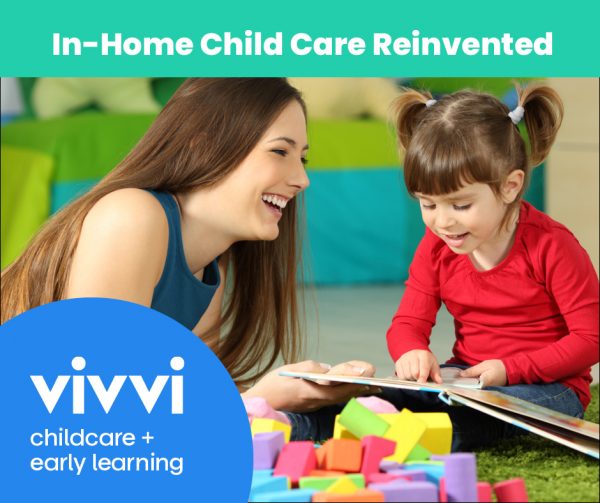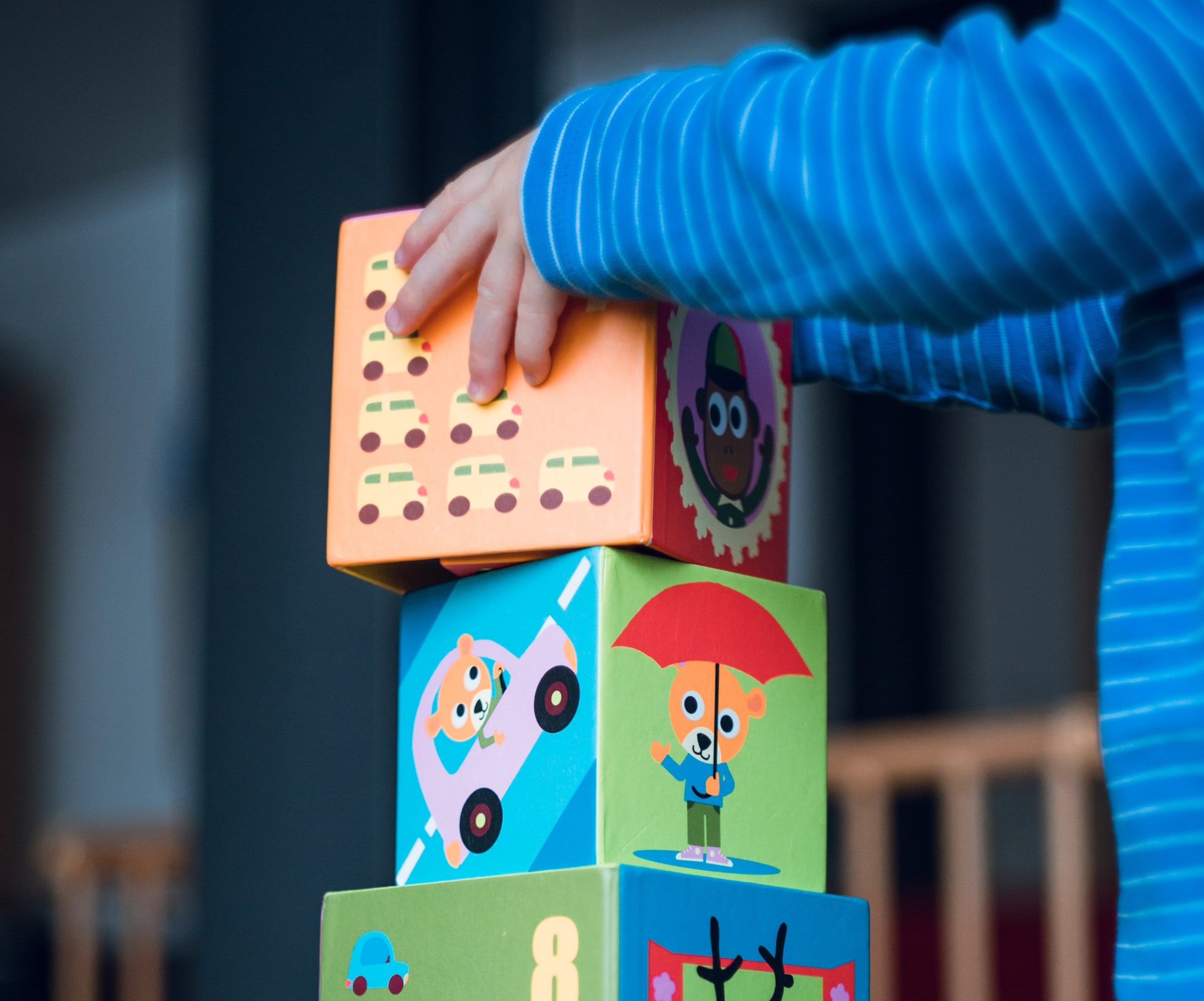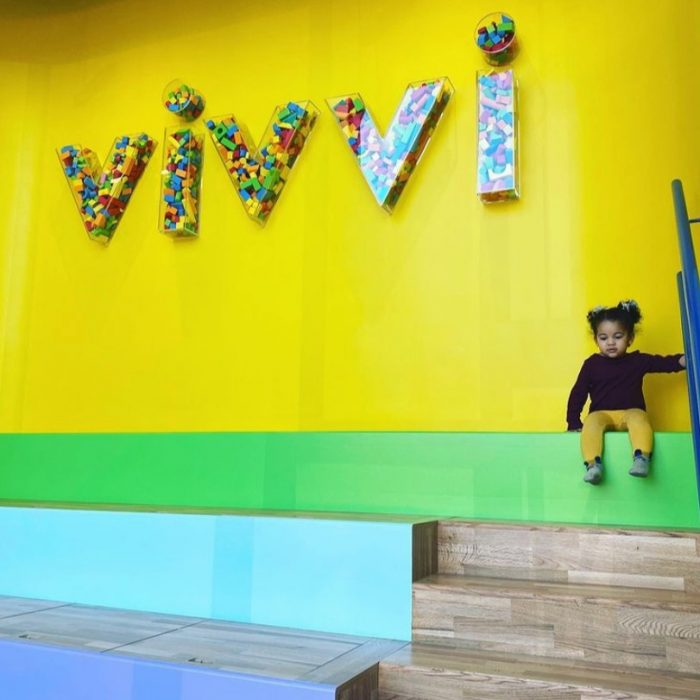Summer Learning for Infants
At Vivvi In-home Childcare, our goal is to create wonderful first memories for our young learners as they grow and develop from infants to young children. With a little ingenuity and planning, this summer can be transformed into a time for continuing to build a strong learning foundation to stretch your child’s mind in preparation for the later years. Here are some ways to do this:
Sensory Play for Infants & Toddlers
Sometimes referred to as a calming activity, sensory experiences are widely beneficial for babies. Engaging in this type of activity promotes scientific thinking as your child builds a foundational understanding of the scientific concept of cause and effect, fine motor skills as they manipulate objects and focus and concentration.
- Water Play provides hours of rich and valuable early childhood experiences to develop children’s creativity and imagination. Grab a bin, fill it with water, add some bubbles, floating and sinking bath toys, and cups or small containers. As children pour, scoop, squirt, and stir, they are also developing early communication, language, and problem-solving skills.
- Food Coloring/Ice Cube exploration This simple activity takes zero time (in fact, it might give parents back time). Fill an ice cube tray with water and add your favorite shades of food coloring. Let the water freeze into colorful cubes and let the fun begin. Aside from the immediate touch and temperature experience, it also supports an engaging outlet for open-ended play and exploration.
- Sensory Bags are always great to have on hand for every day play as they can help little ones develop their sense of touch, fine motor skills, language skills, and cognitive skills. Grab a Ziploc reclosable bag, child safe paint or food coloring, some shaving cream and some painters tape for extra sealant, and you’ve got your go-to activity “in the bag.”
Mathematical Discovery
Exploration of shapes helps your baby begin to gain shape discrimination, eye hand coordination, visual perception and problem solving skills.
Shape Boards for Infants provide them with endless opportunities for focus and concentration as they help babies with eye hand coordination, visual perception, problem solving and shape discrimination skills. Just take a piece of cardboard and put circle shaped felt on the cardboard with velcro backing for exploration. Let your child lead and observe what they are focused on or trying to do and then respond to their intent and interest When interest begins to fade, share this book with them about shapes.
Artists at Work
Finding engaging and safe art experiences for babies can sometimes be a daunting task since children of this age are known to put things in their mouth. Fortunately, there are ways that babies can experience artistic endeavors safely without fear of eating something not suitable for them.
Edible Paint for Infants will give them the experience of being a boundless artist. Simply put the edible paint in the containers with a piece of paper, cardboard or plate for the painting surface, or structure the activity a little more by displaying the edible finger paint on a paint palette made from a paper plate. Then let the creative process begin with a paint brush or their fingers.
If you are worried about the mess, you can put your child in their high chair or move this activity to the bathtub. When your child is finished, use a wet cloth to wipe down the high chair or bathtub and then get your child squeaky clean too.
Two Edible Paint Recipes
Recipe 1: Edible Paints
What You Need
- Food coloring
- 2 cups flour
- Warm Water
- Cold Water
What to do
Scoop 2 cups of flour into a big bowl. Add cold water mixed with drops of food coloring and stir until you make a paste with no lumps. Add warm water a little at a time and stir until you get the desired consistency.
Recipe 2: Yogurt Painting (Infants)
Before assembling this project, your child should have eaten yogurt on at least three occasions without a reaction. If you haven’t introduced this food yet, check with your pediatrician to see if your baby is ready to eat yogurt.
What you need
- One or two small containers of plain or vanilla yogurt
- Food coloring
What to do
Mix yogurt and food coloring together.
A tip for this recipe is that vanilla yogurt is yummy and will likely be eaten by your child. If you don’t want to encourage paint eating stick with plain yogurt. You can give your child the yogurt in the containers with a piece of paper, cardboard or plate for the painting surface, or structure the activity a little more by displaying the edible finger paint on a paint palette made from a paper plate.
Then let the creative process begin with a paint brush or their fingers. If you are worried about the mess, you can put your child in their high chair or move this activity to the bathtub. When your child is finished, just use a wet cloth to wipe down the high chair or bathtub and then get your child squeaky clean too
Let’s Make Music!
Early in life, children start to identify rhythm and even move to the beats. Just like adults it touches their souls! Here is an activity for your baby to perk up their listening skills: a necessary component to music appreciation
Sound Play is so easy to create. Find some plastic bottles or small containers that your baby can hold, and one or more of the following: cheerios, rice, pasta, beans, couscous. Put one of the items in each container and secure the lid. Isn’t it amazing how you can convert household items into learning experiences for your baby?
Toddlers and Preschoolers
At Vivvi, our goal is to create wonderful first memories for our young learners as they grow and develop to prepare them for Kindergarten and beyond. With a little ingenuity and planning, this summer can be transformed into a time for continuing to build a strong learning foundation to stretch your child’s mind in preparation for the later years.
Scientific Exploration for Toddlers & Preschools
Young children are natural scientists, with a ferocious curiosity about the world around them. Scientific activities help to ignite their curiosity as they develop key life skills such as higher level thinking, focus and concentration, and mathematical reasoning. Here are some ways to facilitate scientific thinking.
- DIY Light Catchers offer a creative scientific project doubles as a work of art to hang up for the entire summer. It also helps your child become aware of the properties of light, as well as, fine motor development, following directions and extending their attention span. Gather your used plastic lids (from old yogurt/hummus containers), pour lots of white glue with watercolors or food coloring, stir swirly designs and let dry. Punch a hole in it and use something to hang and begin catching the light!
- Multi Color Balloon Baths are such a fun way for your child to take their bath time to the next level as they learn about colors, number sense and the concept of sink and float in the calming water. Fill three balloons of different colors, fill up the bathtub and let the fun begin!
- I Spy Observer Game provides children with an exploration of their five senses and observation skills as they focus and concentrate on the task at hand. Here is how to play the game: I Spy Game Parent Tutorial. There are endless possibilities for ways to play this game including exploring textures, colors or shapes. If you run out of ideas, your child might have some ideas of their own!
- Icy Fun will keep your child engaged as they use their fine motor and observation skills. You just need a container, a cup of water and some found small objects to put in the water. Since the water will expand as it freezes, leave some space in the top of the container before you freeze overnight. Then give your child a selection of “tools” such as a spoon or toy hammer to help dissolve the ice and discover the treasures.
Self Regulation
Just like adults, children need to develop strategies for managing their emotions, so that they can build social-emotional skills. When children learn how to be more emotionally aware now, later in life they can more effectively maintain loving relationships, and self regulate when challenges arise. But unlike most adults, it can be difficult for children to understand their emotions without adult support. The process of calming down when upset and using words to describe feelings requires a lot of practice.
Expressing Emotions with this Caldecott Medalist book can help your child learn to express and identify their feelings appropriately. Go Away Big Green Monster, published more than 25 years ago, helps children express their fears with humor. It’s hard to get this book these days, so here is a video you can use to introduce your child to the book. The first time you read this book, encourage your child to chime in on the “you don’t scare me” pages. Then you can read it again and as you read the book use “I’m wondering” questions to encourage your child’s participation in the reading. Questions like – “Look at those teeth. I’m wondering how those teeth feel. Sharp?”
To extend this activity, just find a paper plate, markers and decorative embellishments (cotton balls, yarn, pipe cleaners) and glue and make some “monster” faces.
Cook With A Book
Although cooking with young children is sometimes a messy affair, it is a wonderful activity to do with your child for taking advantage of hands-on learning . When cooking is integrated with a literary experience the learning multiplies.
”The Very Hungry Caterpillar” by Eric Carle is the perfect book for providing your child with the experience of creating a dish with fruit. After reading the book, take fruits your child enjoys and if desired granola, honey or agave and yogurt. With each fruit, talk about the shape, color, size and how many fruits you are going to use in your recipe. Then get to work creating your yummy fruit salad. For a hot summer day, have your child mashup soft fruit like berries and bananas and freeze for a few hours with granola in a muffin pan
Music Appreciation
Using finger-plays and songs in early childhood is a great way to help young children learn a new language, gain large and small motor skills, and support memory. Plus, children practice the attributes of sequencing needed for reading comprehension.
Fingerplays are the perfect engaging activity to interact with your child while they learn. Some might be familiar to you and others will help you add to your expertise as a child entertainer!
Artists At Work
Art experiences provide young children with multiple benefits for learning in all domains. Of course, art is important for its own sake–as a source of beauty and expression. For young learners, it is best to give them opportunities to explore and experiment with materials that allow for open expression. What is important is the step by step process they experience, not the end product.
Painting with water is so simple to set up yet such a rewarding experience for your child. Just gather a bowl of plain water and colored construction paper. Using paint brushes of sponges your child’s creativity will be sparked.
Learn more about Vivvi In-home Childcare which offers in-home, on demand childcare for Austin area families. And be sure to check them out on Facebook and Instagram.











